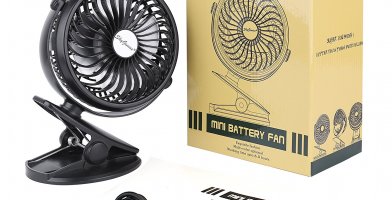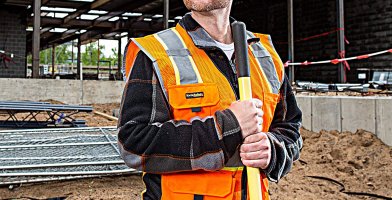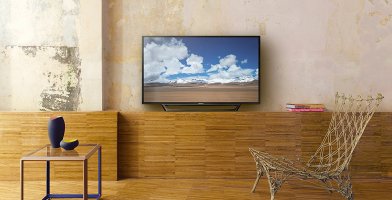Best Furnace Humidifiers Reviews & Price Comparison
During cold months, especially in winter, homeowners turn on their furnaces to increase the temperature in their homes. However, furnaces have an unintended consequence of drying out the air in the house. Without a humidifier, the internal humidity levels can drop below the 30-50% recommended by the Environmental Protection Agency (EPA). Why is humidity so important in a home? What exactly is a furnace humidifier? How does it help? What are the best furnace humidifiers on the market?
Our Top 3 Picks
[srpshortcode id=”15904″][/srpshortcode][srpshortcode id=”15905″][/srpshortcode][srpshortcode id=”15906″][/srpshortcode]
A whole-house humidifier, also called a furnace humidifier, is connected to the home’s ventilation duct system and adds air to the house. A fan pulls or pushes air into the ducts and distributes it throughout the home to feel warmer at lower temperatures, thus making your home heating system more efficient. The device saves money on heating bills while making the dwelling more comfortable.
Each unit has a control known as a humidistat that measures and responds to the humidity in the home. Depending on the model of the humidifier, the humidistat is placed in the living area or on the cold air return duct.
Our buying guide looks at several whole-house systems to help you select the best furnace humidifiers.
10 Best Furnace Humidifiers
1. Aprilaire 700
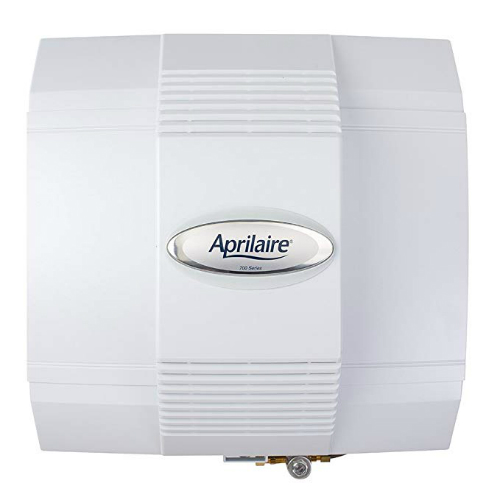
The 700 can help keep the humidity in your home between the optimal 40% – 60% to reduce the risk for the formation of bacteria, dust mites, fungi, and viruses. It also helps reduce the incidence of respiratory infections and allergy and asthma symptoms. The product makes your home feel more comfortable while also preserving your wood furniture and other items in your home susceptible affected by overly dry conditions.
Design – The simplistic design of this unit is somewhat appealing, especially given how lightweight it is. The Aprilaire 700 is designed to be installed on your warm air supply plenum. The general appearance is simple and functional. However, as it doesn't have a reservoir, it is much smaller and lighter, weighing in at about 15 pounds.
Set it and forget it functions – Having to continually adjust your humidity levels can be irritating. However, with the automatic digital control and the exterior sensor control humidification, you simply insert your preferred levels on the control, and the sensor humidity will maintain the humidity levels without any intervention.
You will also love the indicators on this unit. There is a "call dealer for service" light, an on and off indicator, a humidity level, and a change water panel indicator. Also, it has 7 dial settings from which you can select one depending on the humidity and temperature in your house. This unit is a rather noisy one when operating at its fastest speeds. However, it shouldn't be a bother at lower speeds, and the noise won't be very noticeable in the substantial homes it is designed for.
Weight: 15 pounds
Dimensions: 16" x 11" x 18"
0.75 gallons per hour evaporation capacity
7 dial settings
Built-in fan to pull air from the furnace through the humidifier
Humidifies homes up to 4,200 square feet
Automatic with set and forget it functions
Who is it for?
This is a unit for homeowners with upwards of 2,000 square feet.
Who is it for?
This $260 fan-powered humidifier is a unit for homeowners with upwards of 2,000 square feet. It works exceptionally well on tightly-constructed homes up to 4,200 square feet.
Digitally controlled, which helps reduce the time and effort required to maintain hospitable humidity levels
Can work with any water which reduces your expenses
Requires little maintenance other than regular replacement of the water panel
Wiring is tricky and difficult for homeowners to install themselves, so professional installation recommended
2. Aprilaire 500
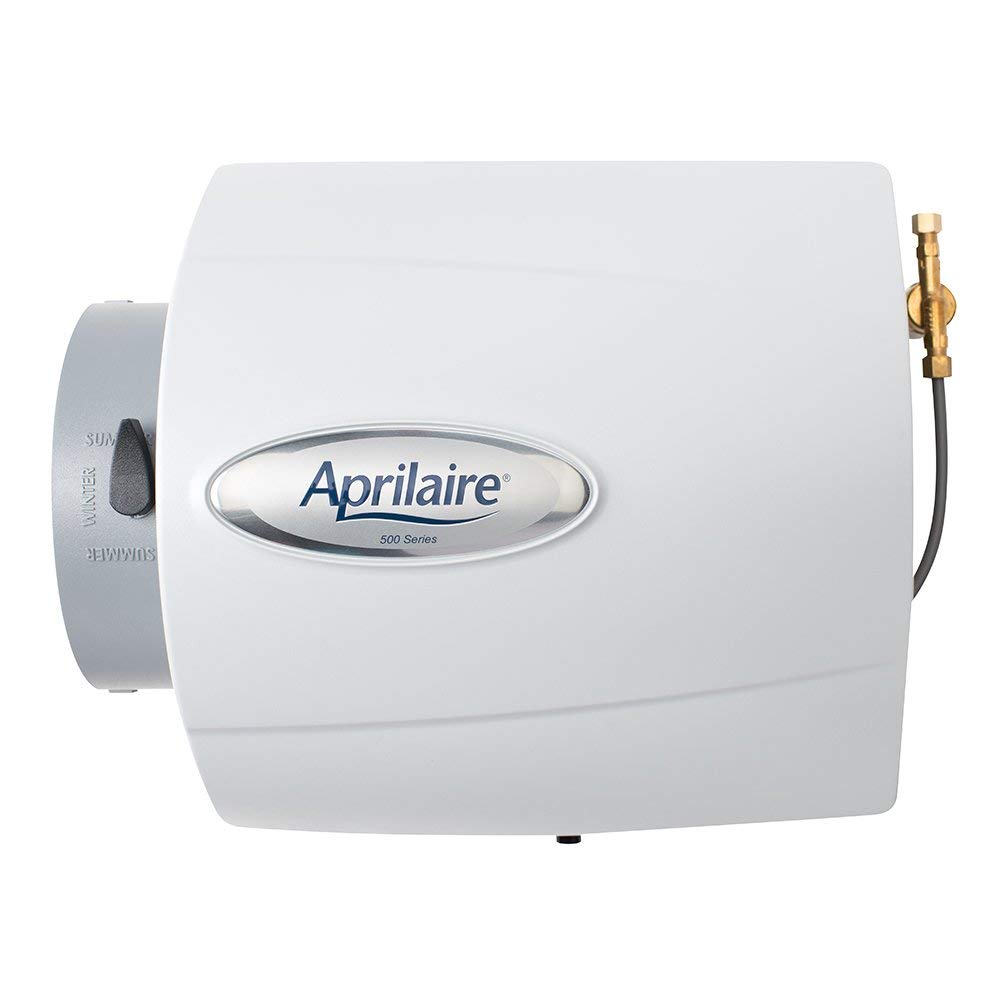
It automatically adjusts humidity - The 500 adjusts to temperature and humidity changes with dual sensors. Once you set the desired levels, it automatically responds to improve your air quality.
It's a bargain - The bypass damper conserves water and energy, which, combined with the purchase price ($150), makes this unit a money-saver. The 500 requires that you manually adjust it for summer or winter settings.
It helps eliminate mold sources - Backed-up water leads to a dangerous build of scale and mold. The 500 unit is fitted with a drain to flush minerals and particles and prevent standing water.
This humidifier also has indicator lights to let you know when the unit is on, when to change the water panels, and when to call the dealer for maintenance.
Key Features
Weight: 10 pounds
Dimensions: 16 * 10 * 13 inches
Voltage: 110V
Automatic with dual sensors
Has a capacity of 12 gallons per day
Helps maintain humidity at 35%-45% levels
Can cover up to 3,000 square feet in tightly built homes
Who is it for?
The Aprilaire 500 is ideal for homes between 1,500 and 3,000 square feet.
The price is just right
Requires very little maintenance
Enables you to turn down your thermostat a few degrees which reduce your electricity bill
Changing from winter to summer settings is a breeze thanks to the bypass damper
Installing the unit isn't DIY friendly; expect to spend up to 6 hours
Professional installation required to preserve the warranty
3. Aprilaire 600
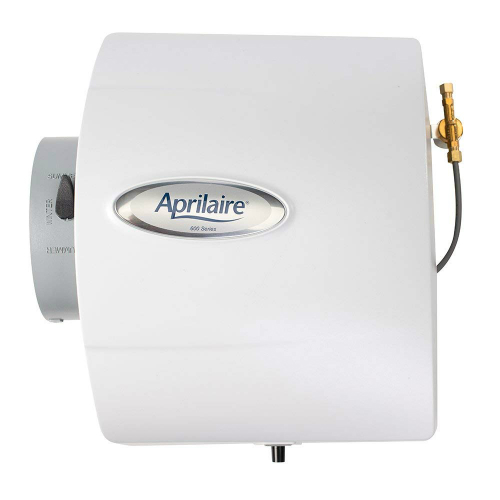
Aprilaire60 automatic humidistat – The first thing you will love with the Aprilaire 600 is the cutting-edge tech on the humidistat. First, it has an outdoor sensor to transmit the temperature outside to the humidistat. Second, the humidistat connects to your HVAC, to appropriately measure the temperature of the air that is going into your home. Combining the temperatures outside with the temperature outside, allows the humidistat to determine the appropriate humidity level in your home.
Indicators – It includes three indicators to visually alert you if your system needs maintenance. Green indicates that the unit is working appropriately, while yellow is to let you know that the 35 Aprilaire water panel needs replacing. Finally, a red indicator is to inform you that the unit isn't working. The uni8t needs professional maintenance.
You will also like the bypass damper as it enables you to change from winter and summer settings. It also lowers your power bills by using gravity to pull water through the water panel the air-flow in your ducts to evaporate the water.
The 600 has a useful permanent memory feature. You don't have to concern yourself with reprogramming the unit after a power outage to restore the date, time, and programming. The copy function is a plus too. Finally, it is a compact unit and can fit in tight spots.
Key Features
Weight: 8.5 pounds
Dimensions: 15 * 10 * 16 inches
Includes an Aprilaire60 humidistat
Voltage: 110V
Capacity: 16 GPD
Who is it for?
This $177 option is ideal for homes between 2,000 and 4,000 square feet.
Reduces your utility bills thanks to the bypass damper
Connects to your water supply, so refilling is unnecessary
Low-maintenance unit
Completely automatic
Aprilaire recommends that you hire a professional to install the unit; this increases the cost significantly
Water that doesn't evaporate can collect in the unit
4. Honeywell HE360A
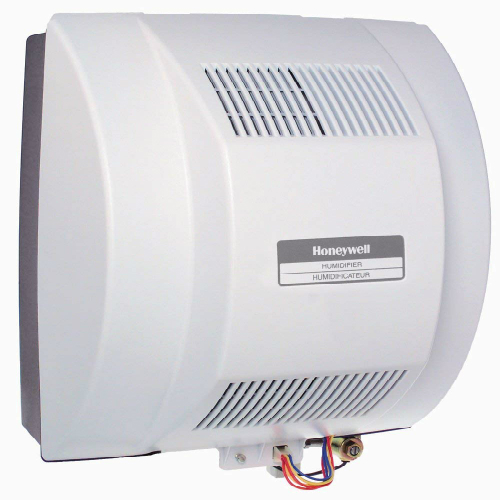
The separate humidistat can be mounted on either the warm air supply or return air duct of any forced-air furnace
Easy installation – What stands out most with the HE360A is how easy it is to install. As you don't need a bypass duct, all that is required is connecting it to a water supply and a power source. The unit requires 120V. Professional installation of humidifiers is never a bad idea, but a DIYer can do this installation.
Little water usage – The HE360 is mounted on the supply plenum, and the air thus enters the humidifier and is forced by the fan through the pad. The innovative technology on this unit is also worth considering, especially the PerfectFlo water distribution tray and powered flow through which use water efficiently. The water cleans the machine, which minimizes maintenance. Some users reported problems in homes with untreated hard water, plus said the machine frequently drips.
.
If you are looking for a unit with low noise levels, this isn't the unit for you, but the noise level is lower than what HVAC systems often produce.
Weight: 18 pounds
Dimensions: 21.2 * 17.5 *16.2 inches
15 GPD
A powered flow-through humidifier
Who is it for?
The $240 HE360A is for homeowners with houses between 1,900 and 4,500 square feet.
Installation is DIY friendly
Uses very little water and will save you money on water bills
Humidistat is quite sensitive, so a slight change leads to a massive increase or decrease in humidity
Complaints of dripping water
Noisy
5. Honeywell HE280
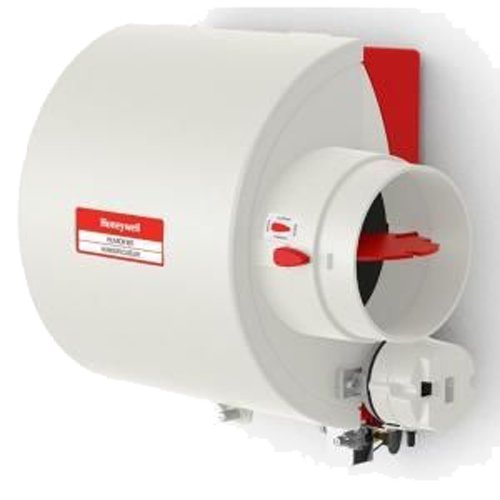
Efficiency – Efficiency is an important aspect of any gadget. However, the HE280 does you one better. You can turn down your thermostat a bit and save water too. The unit has water-saving PerfectFLO technology tech that can save you up to 30% more water than other brands by optimizing the efficiency of water usage. The result is reduced energy bills.
The HE280 is easy to install – You can mount it on either the return air duct or the warm air supply. To accommodate lining up the unit with ducts, it can be reversed from left to right. Professional installation is optimal, but a savvy homeowner can do the job in a few hours.
Safety - The flow-through design is another fascinating feature of the HE280. It keeps the unit clean free of dangerous microorganisms, reducing the need for any maintenance. Also, it's a rather large unit, and fitting it in tight spots will be difficult.
Product Features
Water-saving technology
Weight: 19.1 pounds
Dimensions: 22.9 * 19.8 * 1.7 inches
Who is it for?
The Honeywell 280 is for persons with residences up to 4,000 square feet. However, its $120 price tag will appeal to those on a limited budget.
Uses 30% less water compared to other units effectively lowering your utility bills
Affordable=
The flow-through design ensures that water doesn’t collect reducing the need for maintenance
1-year warranty
Made of cheap plastic, which might become brittle in coming years
No gasket to prevent air leaks where you connect it to the furnace
Unit lacks insulation
6. Emerson HSP2000
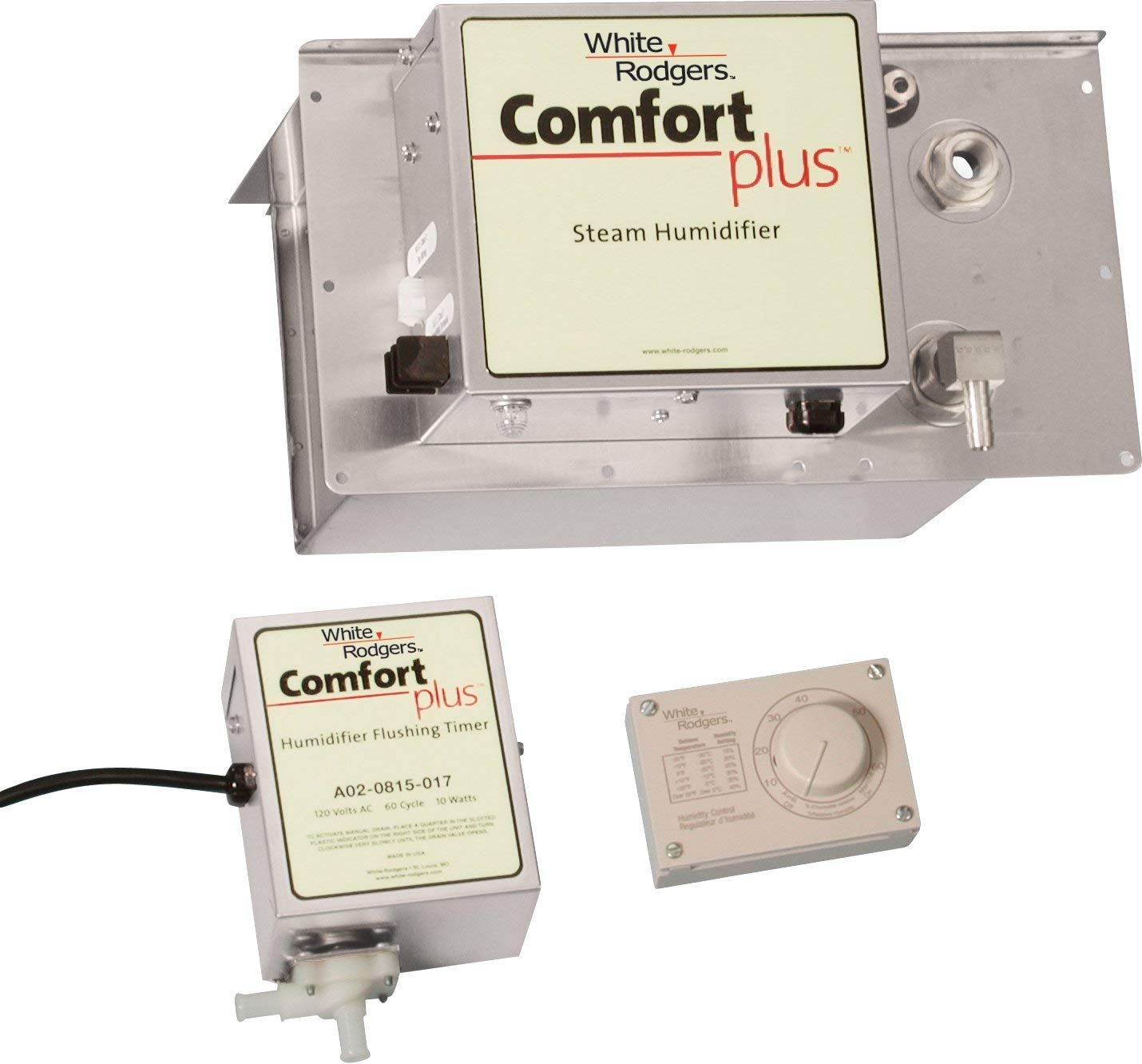
Thermal fan interlock - Because steam humidifiers do not require hot air from the furnace to run, they turn on whenever merchandise in the home is low. The thermal interlock fan allows the device to humidify the air without the heat.
Advanced features – The cutting-edge tech on this unit should be another reason why you invest in one. The safety cutoff switch will protect it in case of an overcharge, and the built-in overflow protection gives you peace of mind. The flushing timer is also a plus since you can set it for the humidifier to flush excess water. The chlorine removal filter ensures that the moisture distributed through your home has no negative elements, while the pure air filter removes toxins and elements.
By and large, this element of White and Rodgers is the pinnacle of furnace humidifiers. Professional installation is recommended and will increase the price, but given the cost of the unit, engaging an HVAC specialist will make the most of your investment.
Dimensions: 7.6" x 12.5" x 12.6"
Weight: 18.1 pounds
Voltage: 120V
13 GPD
Who is it for?
If you are willing and able to spend a small fortune on a furnace humidifier, the Emerson HSP 2600 is the unit for you. Paying over $826 might be worth it for top efficiency.
Works independent of the furnace in instances where humidity is required but heat isn't
Prevents mold thanks to the flushing timer that prevents water from collecting
Built like a tank
Expensive
Installation isn't DIY friendly so engaging a professional increases the cost
How Do Furnace Humidifiers Improve Conditions In Your Home?
As noted earlier, furnaces tend to dry out the air in your home and often to levels below the recommended 30%. Dry air creates an unconducive environment for pets, people, and plants. First, it irritates your lungs, leading to respiratory infections, dry skin, chronic joint and muscle pain, sore eyes, and low mental concentration. People can even suffer from nosebleeds owing to the difference in humidity in their bodies and outside. To avoid such issues, the moisture level in your house should always be between 30 and 60%.
Pets will become restless in such inhospitable conditions. Dogs, in particular, are affected by the low humidity and will have a difficult time trying to cool down their bodies. Your indoor plants will dehydrate if the moisture is low.
Low humidity levels will affect more than your pets and animals. Your wood products and electronics will be affected as well. Though wood used in construction is considered dry, it still contains a bit of moisture. Hardwood floors will crack, musical instruments and artwork will be ruined, and wooden doors will warp when the humidity is too low. Also, dry air is favorable to static electricity, which causes problems to your electrical devices. The recommended humidity level should be above 35% to protect electronics.
Having a device that can humidify an entire house is the best solution to these concerns. Stand-alone humidifiers are only capable of adding moisture in one room. You will need several such devices to cover your entire house.
A furnace humidifier can also reduce your utility bills. As humidity decreases, the air tends to feel cooler, and thus you turn up your HVAC to increase the temperature. This endless cycle and only leads to higher heating bills. On the other hand, by reducing your thermostat by around three degrees and increasing the humidity, you can lower your utility bills by about 5%.
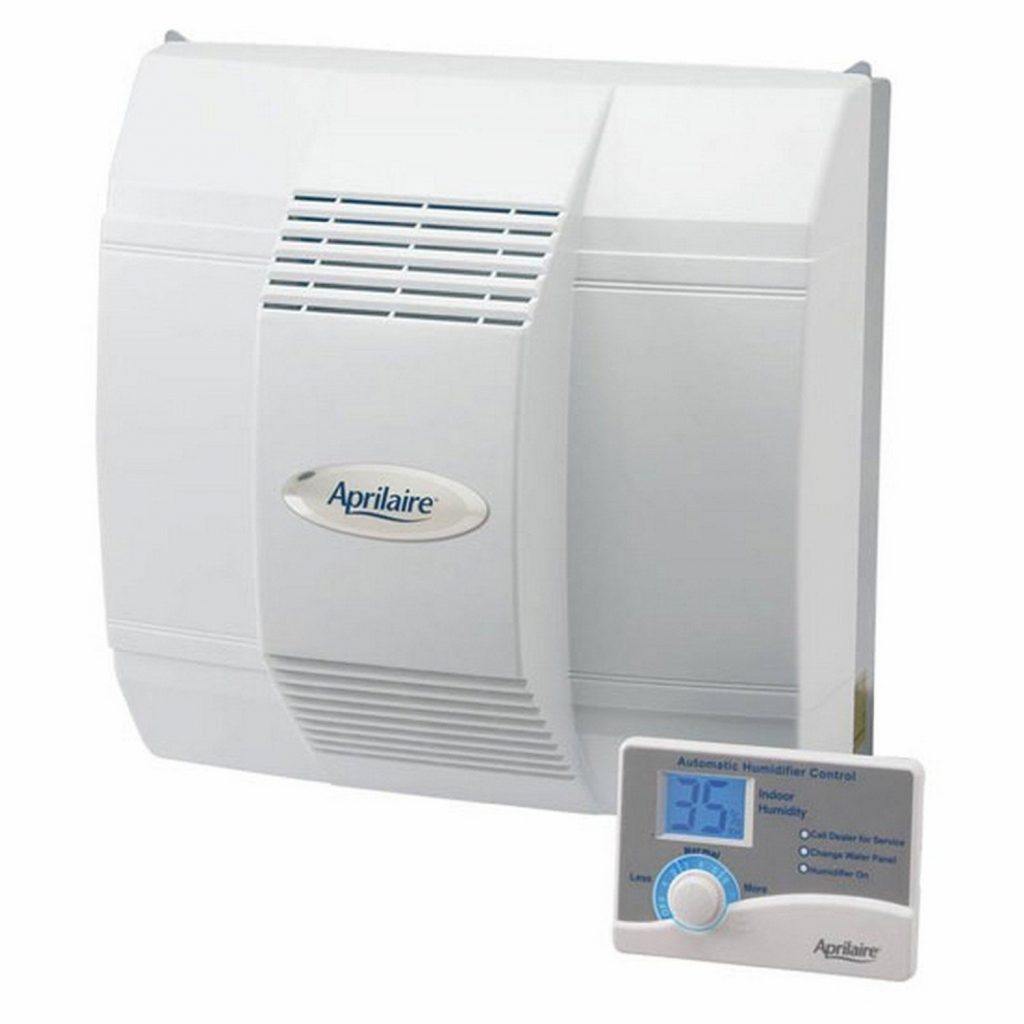
What to Look for in the Best Furnace Humidifiers
Once you identify the benefits of a furnace humidifier, what do you need to know what to look for when purchasing one? As there are many brands on the market, making an educated choice on the best furnace humidifier can be challenging.
Type
There are three chief humidifier types. The unit you purchase depends on your needs; an HVAC specialist can help you determine the kind that serves you best.
Drum or bypass humidifiers are connected directly to the furnace’s air return or air handler to add moisture to the air. The furnace motor pushes the air through a water panel in the unit, absorbing moisture before being distributed through the heat duct. With no moving parts, this type of system has a low maintenance cost, but since the air continuously loops through the furnace and ductwork, it loses humidity as it passes.
Flow-through humidifiers are similar to bypass humidifiers. Instead of using the fan’s blower motor, they include a fan that blows the air across the water just before it flows into the ductwork. The process allows an extra gallon of water to blow through the ducts, making this system ideal for larger homes. As with the bypass system, this type of humidifier is evaporative as the water evaporated from a pad constantly supplied with water from a direct water line.
Steam humidifiers send the steam from boiling water into the air as it enters the ducts. The water is stored in a canister instead of using a pad. When the system detects low humidity, it electronically boils water until it turns into steam. This type is more costly to install and maintain but is the most efficient for a large home.
Controls
Before purchasing a furnace humidifier, decide on whether you want automatic controls or you are okay with manually adjusting the humidity level. Modern options are retrofitted with humidistats. They are similar to thermostats in furnaces, just that they alter the humidity in your home and not the temperature. The humidistats automatically send a signal which will raise or lower the moisture to the required levels. Automatic units are more expensive, though. You can use thermo-hygrometers to get humidity readings, but you will have to adjust the device manually.
Home Size Vs. Device Capacity
Humidifiers have a specific output that is measured in GPD or gallons per day. When buying a humidifier, both the size of the home measured in cubic feet and the air loss from the building envelope figure in when choosing the right size. A home that has air leaks, poor insulation, and other single pane windows will require a bigger humidifier to do the job.
A 1,200 square foot home with 10-foot ceilings would have cubic footage of 12,000, while a 2,400 square foot one with 10-foot ceilings would be 24,000 cubic feet. Depending on insulation levels, the small one might require a unit that could pump 5, 10, or 15 GPD. The bigger one might use a 10, 20, or 30.1 GPF unit based on the heat loss from the building envelope. Other factors that influence the size need include indoor and outdoor relative humidity and internal sources of moisture from showers and cooking.
Installation Requirements
These vary with the model. Some units will attach to the furnace, while others will connect to the ductwork. It is crucial to know the configuration of your HVAC and ventilation ductwork \before purchasing a humidifier so as to find one that will work with your HVAC seamlessly or without extreme reworking. Installing a whole-house humified on your furnace is often best left in the hands of a professional.
Replacement Parts
Your humidifier will require routine maintenance, and there are some components that need to be replaced regularly for the unit to work effectively. Filters, evaporation pads, and screens are some of the parts that you will frequently replace. Check the cost and availability of these units before purchasing a furnace humidifier.
Additional Features
Furnace humidifiers are not equal. Some additional features will make your life easier. First, be on the lookout for a water cutoff function that turns off your unit when the water is low. Also, consider corrosion resistance as it will help maintain the quality of your humidifier. Finally, take units with a mounted frame, as they will make installation a breeze.
FAQs
1. Do I need a furnace humidifier?
In the Southern US, most people don’t need a whole-house humidifier as the air is already humid. In the North, where the climate is dryer, humidifiers can help prevent skin irritation, nose bleeds, static electricity, and damage to wood furniture. The humidity in your house should be between 30% and 60%. However, the furnace can dry it out to 25% during winter and the cold months, and only a humidifier can bring it back up.
If your internal humidity is consistently above 60%, you may need to remove some moisture with a dehumidifier.
2. Why does it take long to get to the recommended humidity level?
If you have just installed a furnace humidifier, it will take a week or so before you raise your humidity to the required level. The reason for this is that most of the items in your house, i.e., clothes, furniture, wooden artifacts, etc., will absorb most of the initial humidity. It is only after that the moisture in your house will increase.
3. How do I maintain a furnace humidifier?
Drum humidifiers use a foam pad to collect the water, which can be a mold hazard; this should be changed once a year. Steam humidifiers need their canister changed out once per year as well. Mold is less of a hazard with a flow-through type and virtually no risk with a steam humidifier. However, all humidifiers require occasional cleaning according to the manufacturer’s directions to prevent bacteria and mold buildup. All units need a yearly test to ensure water can flow properly and that there are no obstructions or leaks.
4. Are portable humidifiers a good substitute for a whole house system?
Furnace humidifier systems are expensive to buy and install, whereas portable units can just be filled with water, plugged in, and turned on. The standing water in a portable unit can contribute to mold growth, so the water must be changed daily, and the unit cleaned and dried weekly. If it has a filter, that needs to be adjusted according to the product guidelines.
5. Are there other ways to add moisture to the home?
While is no substitute for a device that systematically controls motion in the air, some ways to add moisture require no equipment. These include:
- Distribute houseplants around your home as they release moisture through transpiration.
- Open the door to your dishwasher after it has finished its wash and rinse cycle and let the dishes air dry as steam escapes.
- Crack the bathroom door after taking a shower to let humid air escape.
- After a bath, let the water cool down before draining it.
- Lower the thermostat a few degrees
Conclusion
The humidity level in your home contributes to its comfort, your health, and your energy bills. Having a whole-house humidifier system can be an excellent investment. Our buying guide presents some of the best furnace humidifiers for your consideration.


